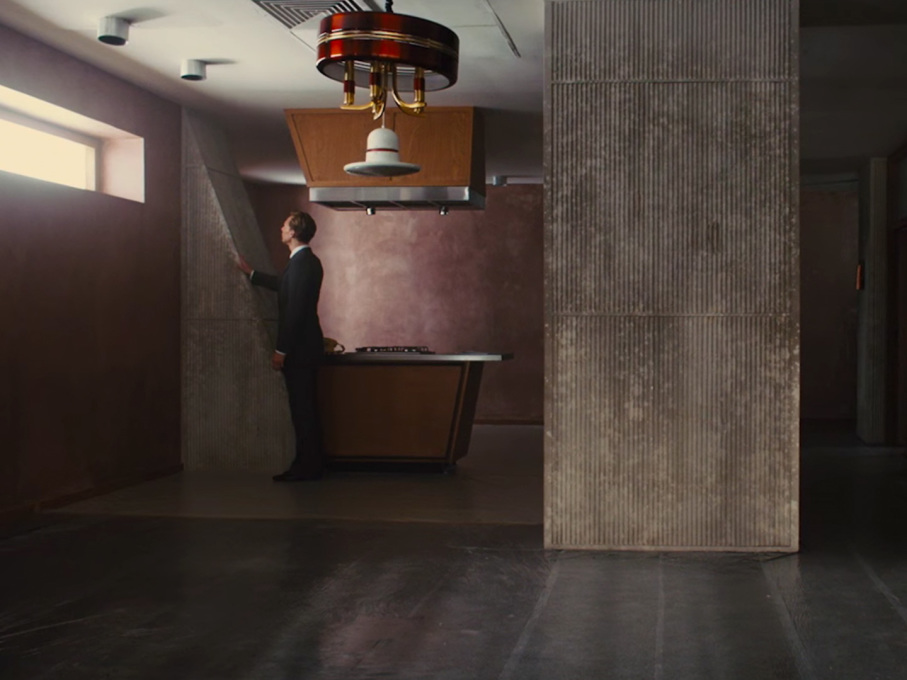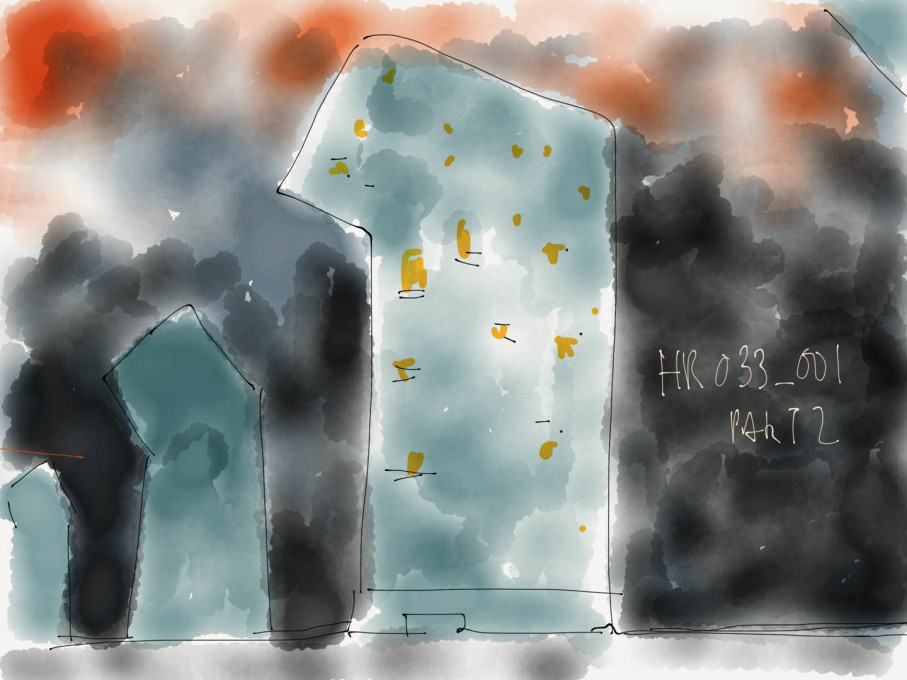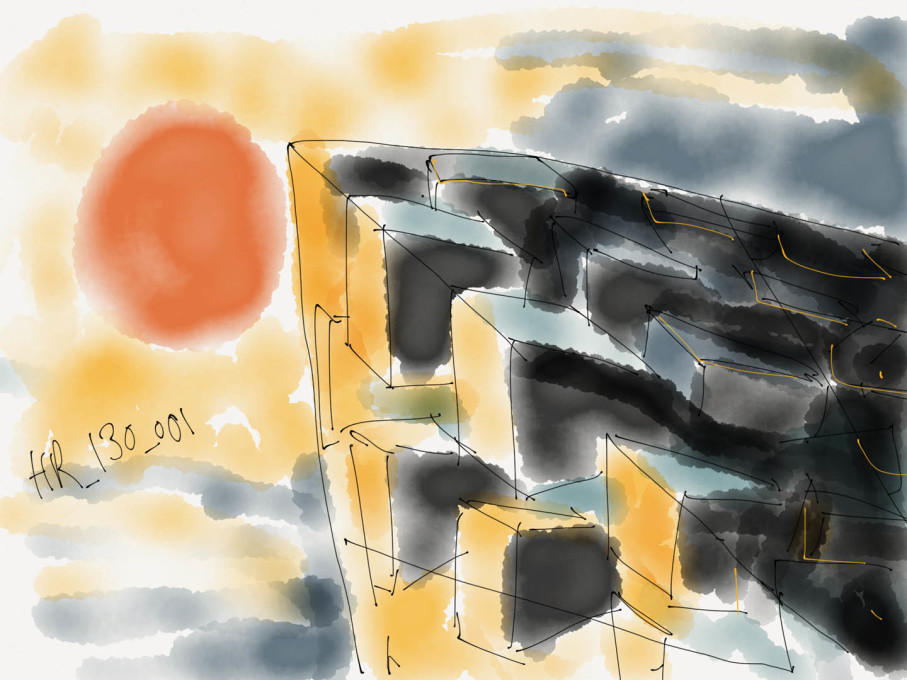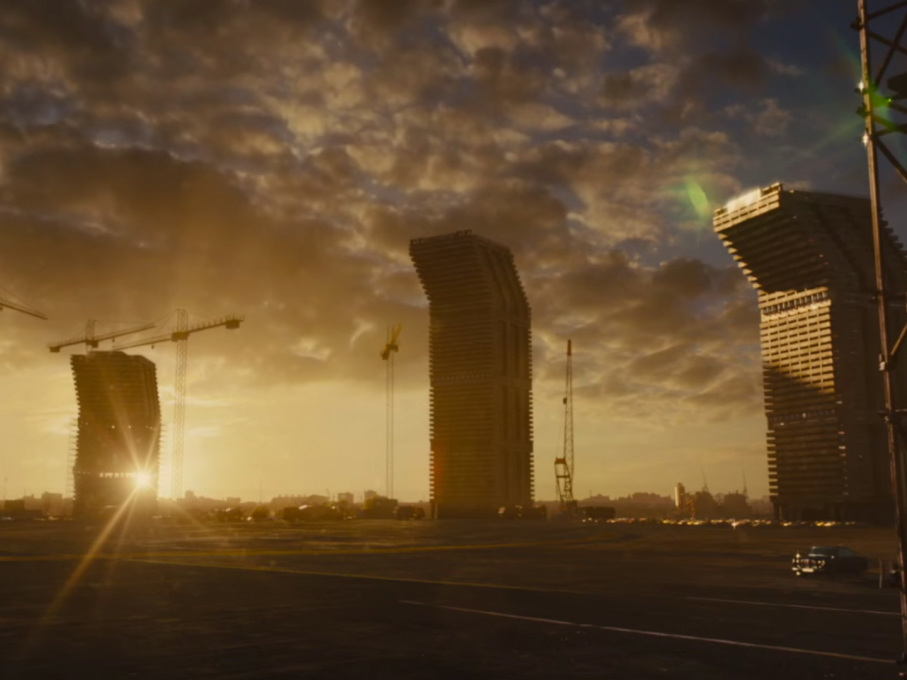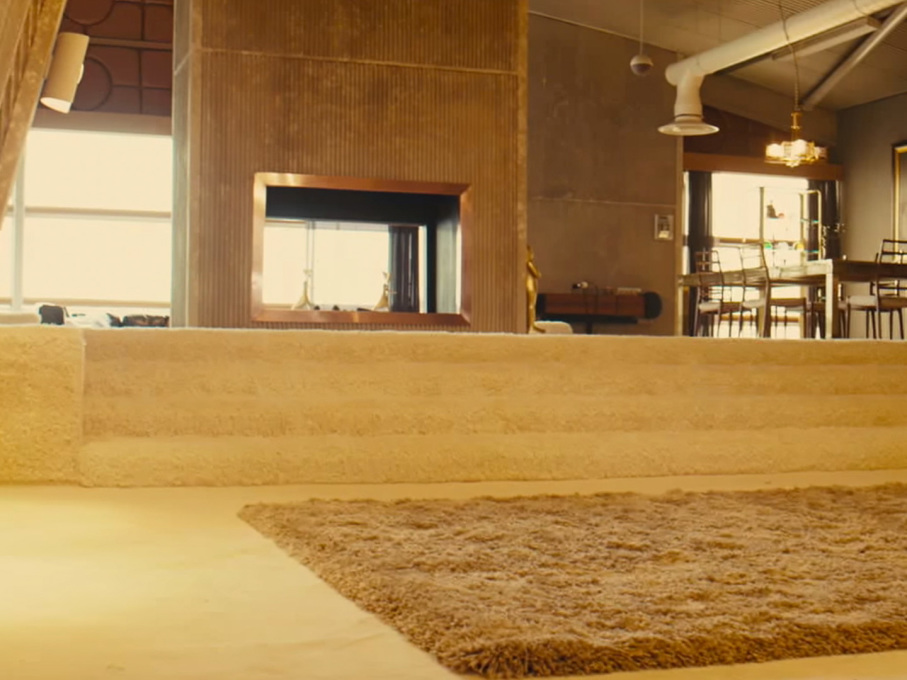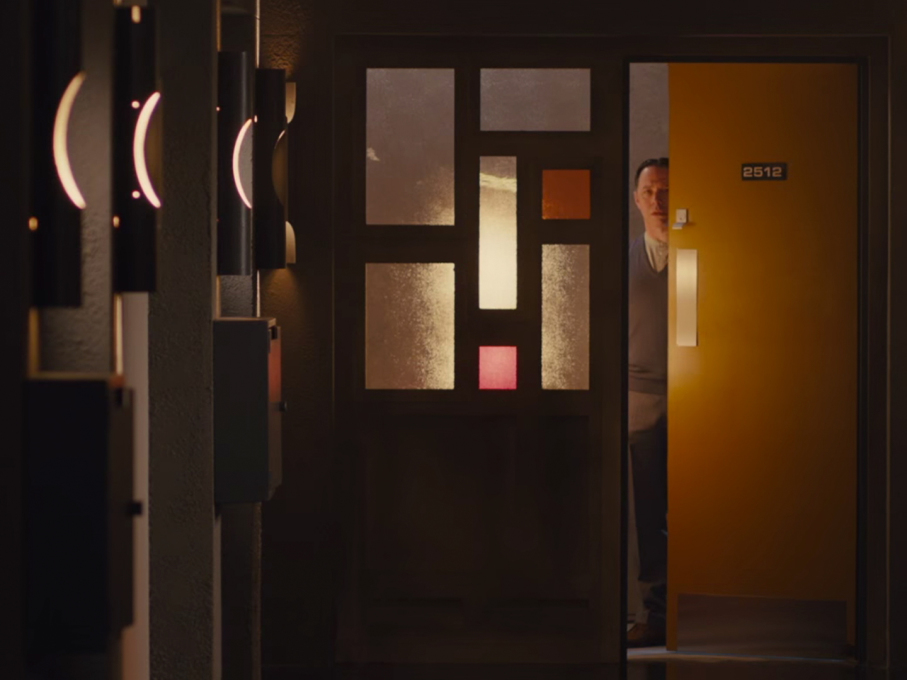The long awaited film adaptation of J. G. Ballard’s High-Rise – attempted by many directors in the past – arrives in UK cinemas on March 18, 2016. Jon Astbury spoke to the British director who finally succeeded, Ben Wheatley, about stealing drinks at the Barbican, filming the unfilmable and the architectural headaches of actually having to design Ballard’s monolithic tower block.
I understand you were a fan of J.G. Ballard’s books from an early age – what drew you to them and in what way did you connect with them?
As a teenager these books were an entry into esoterica and counter culture – there was Ballard, Burroughs, Hunter S. Thompson, and the like. The thing with Ballard is that you can keep coming back to him every 10-15 years and they are completely different.
As a teenager it was more about having discovered it for the first time; the sex, drugs and violence. I was a big comic book fan so it all blurred into reading 2000AD and Block Mania, which is very Ballardian and ended up as the basis for the second Dredd film.
I think that when I was younger it was still too close in time to its original publication, so the prediction side of it didn’t seem as prescient. When you get a bit of distance and start to realise how accurate many of the things are, that’s when it becomes a bit scarier and I started to think that if you made it into a film it would still, after 40 years, be so much about “now”.
The publication of the book coincided with several new landmark projects in London: Trellick Tower had just gone up, and the Barbican’s towers were soon to follow. Growing up in Essex on Ballard and comics, was this the sort of thing you were making trips into London to see?
I never saw the Barbican or Trellick Tower when I was a kid – I didn’t really experience that kind of stuff until I moved to London in the 80s and we’d hang out at the Barbican, where everyone would come out and have their drinks in the interval and then we would steal the drinks and take stuff from the bar. That was quite interesting, a scene of “high and low”, a bit like that scene in A Clockwork Orange when they are sitting in the bar and see the “sophistos” with the opera singer.
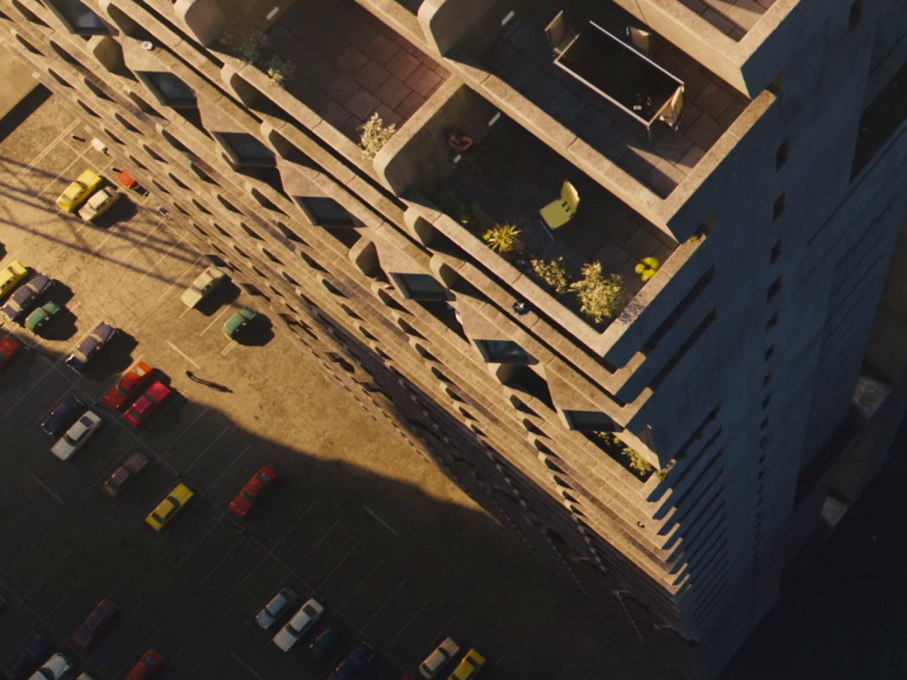
So you had no dramatic High-Rise-esque awakenings to speak of?
I went to school in Chalk Farm, London, so I moved from a suburban state school in Essex to an inner-city state school. The first day I was there a lot of the kids went to the housing estate directly opposite and smashed up cars and put burning toilet rolls through letterboxes – that was quite a rude awakening. That spine of tower blocks that runs up between Chalk Farm and Swiss Cottage was my first experience of what these kinds of buildings were like, but of course a real experience of a tower block and what is written in High-Rise are very different things.
That being said, there are of course plenty of comparisons made between High-Rise and brutalism, or the work of Oscar Newman around “defensible space” for example. Do you feel this somewhat misses the point?
From what I understood from the “streets in the sky” and the history of slum clearance, it’s completely different to some of the American experiences, where it is very luxurious and expensive as opposed to slightly badly built and run down with people not wanting to be there. I would skirt away from saying the film is any sort of criticism of tower blocks in general.
Ballard’s depiction of the high-rise, or space in general, his so-called “inner-space”, was and perhaps is still considered by many to be “unfilmable”. How did you approach this?
I never bought this idea of it being “unfilmable” so much. When I read High-Rise it wasn’t a book that scared me in terms of adaptation – although screenwriter Amy Jump did that and it was therefore all her problem: a big problem that she solved very well. It’s not the same as when you read Burroughs’ Naked Lunch, which is so fractured and jumps all over the place. High-Rise actually has these almost Hollywood-style arcs of development. But then Ballard is very slippery. Just as you invest in a character and think they are going to be one thing they turn into something else, which appealed to me because it’s much more like life. Only in movies is there an alpha dog hero who will John McClane it up to the top of the building and kill everybody and win. It just doesn't happen, in the same way that you are probably onto a loser if you bet on Robert Laing to do the right thing all the way through.
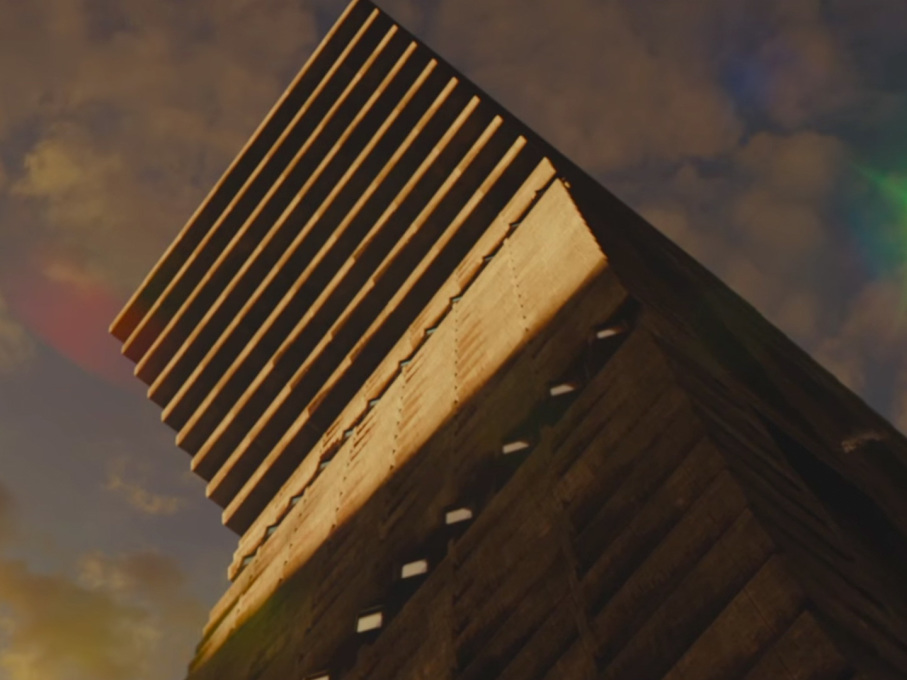
What filmic or real life inspirations were there for how to create this space?
One of the teaser trailers, the sales one, actually comes from the development they had recently with the advert like American Psycho…
...the Redrow Penthouses?
Yes! The one that’s like “you deserve it – escape from the scum!” That was the one that inspired me more, but the infomercial in the trailer for Cronenberg’s Shivers is very similar as well. Shivers is a very similar film, and it was written and came out at the same time as the High-Rise book – they are so similar but no one can get to the bottom of quite how they ended up that way.
We watched Shivers as part of the preparation for High-Rise and I thought “Jesus - this really is similar”, only that in High Rise there is no real explanation as to why they go crazy but in Shivers it’s sex slugs...so it might as well not be explained. They obviously had the same issues with how they structured it, and a way of introducing the tower was through infomercials.
And, as I know you’re a big fan, how about the Doctor Who “Paradise Towers” episode?
I don’t know if that’s so much like High-Rise, that’s more like an amalgam of A Clockwork Orange and other stuff, but I’m sure it was attractive to Doctor Who because you only had to build three sets. We did also watch it to prepare for High-Rise, and the thing that says more about me than filmmaking is that I thought the health and safety was atrocious, I mean Bonnie Langford was running with her hands tied behind her back!
So the narrative was fairly straightforward to transition, but what was the role of the building itself in this?
We wanted it to feel like the building was oppressing the people, that it didn’t care about them and their own space.
I had stayed in a hotel in Denmark and the room had a pillar in the middle of it. It was obviously a structural thing rather than an aesthetic one, because the building was quite a weird shape...
...like the pillar Laing hugs at the start of the film?
Exactly - I thought “why is this here? This is really mean”: basically you’ve been thrown under the truck if you are given one of these rooms, it’s like “fuck them, whoever stays there it’s just tough luck”.
So for High-Rise I liked this idea that the architect Anthony Royal had sacrificed the comfort and wellbeing of all the residents just to hold the buildings up. Mark Tildsley, the production designer, came up with this triangular buttress motif that was really oppressive, and makes it feel like the weight of the building is pressing down in these wedges. But they also mean everyone has to move to accommodate the building the whole time.
So were these metaphors balanced with trying to make the high-rise building in some senses a “believable” construction?
Some of the design is practical to the film. We had an issue that we started to worry about, which is that you wouldn’t be able to identify if you were in the same building all the time; so when you’re in the supermarket you might assume it was down the road or the swimming pool was somewhere else, so Mark Tildesley used these motifs in every space to tie it together.
The shape of the building came from a description in the book that the development was a hand and we thought the fingers might be bent around the “palm” – the lake. But then when I looked at the script there were a lot of balcony-to-balcony conversations and they weren’t possible with a straight building because you can’t really see the balcony above unless you lean out. So it started to get this raked appearance. But there’s not really an example of a tower that big – it would be a monster. We were trying to work it out and we ran into all of these architectural problems of layout, how many flats could be on each floor and it was blowing our minds a little bit.
It always makes me laugh when they say that room 237 in The Shining was an “impossible space”, and that the layout of the hotel is all on purpose, that the corridors don’t go anywhere deliberately – but it’s really just because you can’t fit it all in. We had the same issues with making impossible spaces, what are the shape of the flats, where would they be, how would they all have windows?
On one level we wanted it to be a working building and make sense, but on the other level we hit up against the whole architectural discipline and thought “oh Christ, we can make sense of one apartment, but we’ll never make sense of the rest of it”. In our tower block there would probably be at least 500 apartments with no windows.
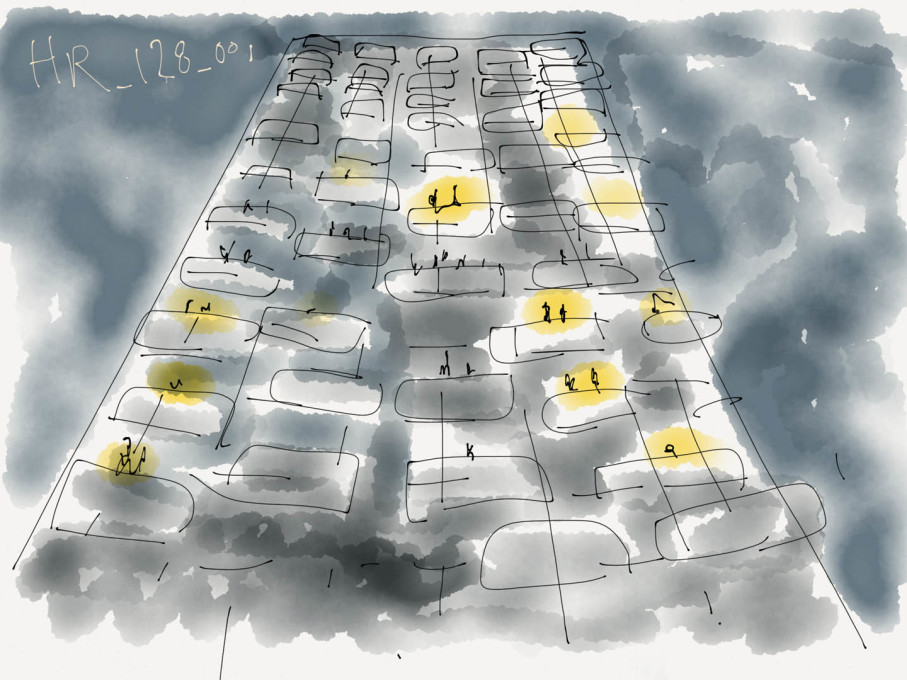
Ballard seems to comment more on the psychoses of the middle classes than any broader politics, but the film has come at a troubling time for many so-called “sink estates” in the UK, and you chose to end the film with a Thatcher quote (“There is only one economic system in the world, and that is capitalism”) – did you want the film to be political?
I think you can be political without tying your flag to a party. I am a firm believer in not believing. In terms of following people, I distrust people who like to be followed, it is almost a character flaw in itself. But I think the film is certainly political, in some ways just in its sheer grumpiness and crossness. I think as a filmmaker you always have to reflect the society around you and your own idea of what you feel has happened, even if it is not concise. All the films I’ve made have that point of view to a degree.
– Jon Astbury is a contributing editor at the Architectural Review.
Ben Wheatley is based in Brighton, UK. High-Rise is released in UK cinemas on March 18, 2016.




